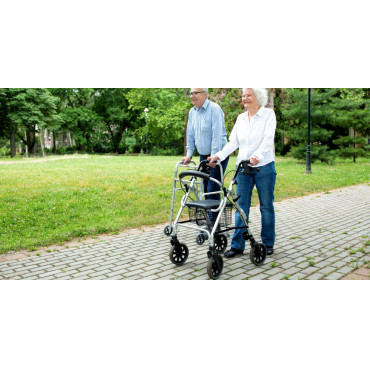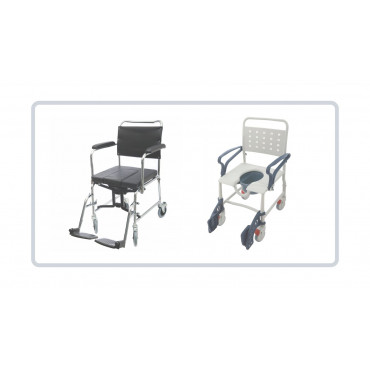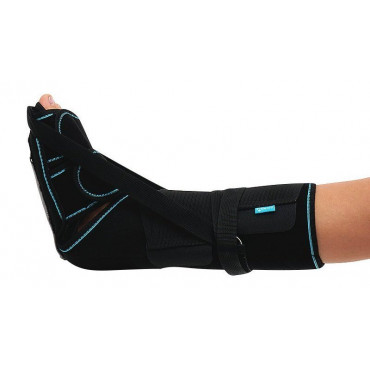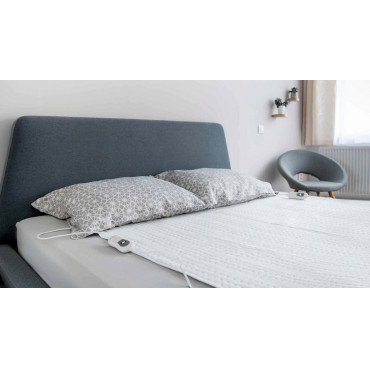Old age comes with changes in the human body, as a result of which it becomes limited or impossible to perform certain tasks that a person could easily cope with before. Fortunately, modern rehabilitation and care products for the elderly can improve the quality of life, provide comfort to the person and the person who cares for him, and also restore a sense of dignity.
One of such important assistants in caring for the elderly is a medical product - a toilet chair. This functional device simplifies hygiene procedures for people who have difficulty moving independently or using a regular bathroom.
What does a toilet chair look like?
A toilet chair is a special mobile chair with a hole in the seat and a removable container (bucket) for collecting waste. It is also called a toilet chair or a toilet chair. The main purpose of this device is to facilitate the process of defecation and urination for people with limited mobility.
.jpg)
Therefore, a toilet chair can be used not only for the elderly, but also during the rehabilitation period after serious illnesses, injuries, wounds or operations.
Such a chair has a comfortable back, armrests, adjustable leg height and an anti-corrosion coating, which allows it to be used even in damp rooms. Some models can be transformed into a toilet seat or are equipped with wheels for easy patient transportation.
Who needs a toilet chair?
A toilet chair will come in handy in every family where there is a grandmother or grandfather who already has difficulty moving and who need additional help with household issues. This product has a wide range of indications for use and can be recommended for:
- elderly people who cannot independently move to the bathroom;
- patients after operations, pelvic, leg or spine injuries, especially during the period when they are shown minimal physical activity;
- people with disabilities who do not have access to an equipped toilet room;
- bedridden patients at home or in hospice care;
- pregnant women in the late stages or in the postpartum period, if there are difficulties with movement.
In addition, the toilet chair helps to reduce the burden on the person caring for the elderly person and facilitate daily assistance. After all, now a person can, to a greater extent, sit down on a toilet chair and urinate, defecate or perform personal hygiene without the additional risk of falling or injury on the way to the bathroom.
If there is a bedridden patient or a person with a disability in your family, then when arranging the room, you can additionally purchase a medical bed, an anti-bedsore mattress, wheelchair cushions, etc.
Types of toilet chairs
The range of toilet chairs is quite wide today. The MED1 online store website presents various models that differ in functionality, design and price category. Main types:
- Stationary toilet chairs
The simplest and most stable models. Ideal for home use. Equipped with a removable bucket, armrests and can have height adjustment.
- Folding toilet chairs
Easy to store or transport. Compactly folded, take up little space, while remaining reliable in operation. A portable toilet chair can be carried around the apartment or house, which will be very convenient for patients with limited mobility.
- Wheelchairs with toilet
Combine the functions of a wheelchair and a toilet chair. Equipped with wheels for easy patient movement. Have brakes, locks and ergonomic seats.
- Chairs with sanitary equipment
Some models have lids, soft seats, anatomical shape, removable armrests – everything for maximum comfort.
Whichever option you choose, our managers will always be happy to advise you and help you place an order. When choosing, you should pay attention to several important characteristics: user weight, device dimensions, presence of wheels or height adjustment.
If you want to save money and buy a used commode, we would like to warn you that this decision carries certain risks. Firstly, it is a violation of hygiene: the commode comes into contact with the body and biological fluids, and there is no guarantee that it has been properly disinfected. Secondly, worn parts - loose fastenings, microcracks or loosening - can lead to a fall or injury. In addition, such products do not have a guarantee and are often not suitable for the individual needs of a new user.
A commode is not just a technical solution, but an important element of caring for a person going through a difficult period in life. It allows you to save dignity, comfort and independence, while making the work of medical staff and relatives easier.










-370x370.jpg)